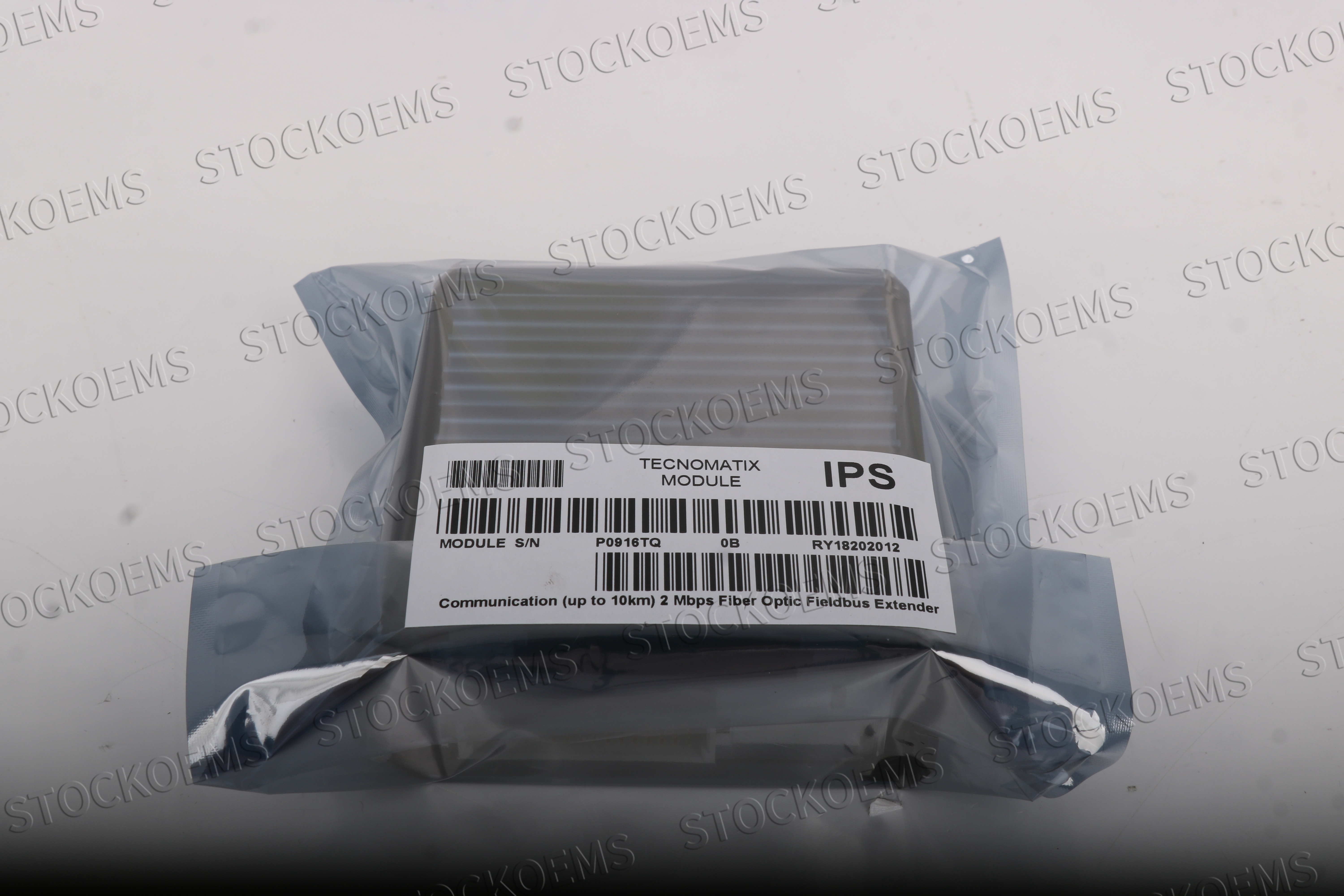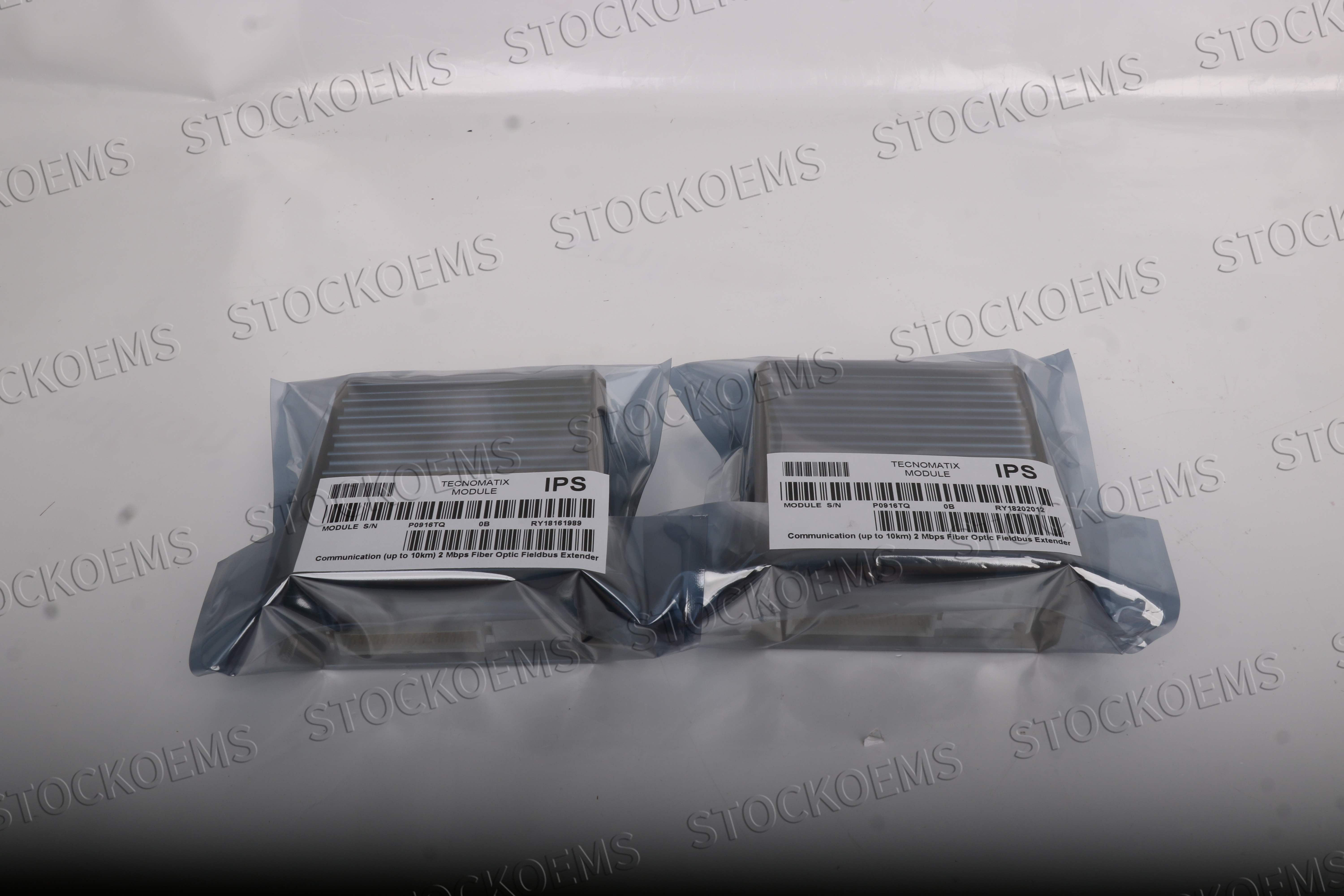What is the Foxboro FCM2F10 P0916TQ and What Problem Does It Solve
In the complex field of industrial automation, the limitations of traditional copper cabling have always been a thorny problem—especially when engineers need to connect critical fieldbus modules (FBMs) over long distances or deploy equipment in harsh electromagnetic environments. The Fieldbus Communications module FCM2F10 P0916TQ Foxboro fiber optic communication extender was developed to solve this dilemma. This device is essentially a hardware module designed specifically for industrial scenarios. Its core function is to convert electrical signals into optical signals using fiber optic transmission technology, effectively establishing data channels between long-distance devices. It primarily addresses three major pain points of long-distance cable transmission: signal attenuation, electromagnetic interference, and grounding loop effects. With a communication extension capability of up to 10 kilometers (approximately 6.2 miles), engineers can deploy fieldbus modules in optimal locations according to process requirements, completely freeing them from the constraints of distance from the central control room. This feature is revolutionary for large-scale industrial scenarios.
Who Can Benefit from This Module and Where Should It Be Deployed
The question of who stands to gain the most from integrating the Foxboro FCM2F10 P0916TQ versatile and reliable module points directly to a wide array of industrial professionals, including control systems engineers, plant managers, and maintenance teams working in demanding sectors. These individuals are responsible for ensuring data integrity, system uptime, and operational safety, often in less-than-ideal conditions. The "where" of its application is just as critical; this module is specifically engineered for deployment in environments where electrical noise is a significant concern. This includes facilities with heavy rotating machinery, arc welders, and high-voltage power lines, all of which generate substantial EMI that can corrupt data signals on copper wires. Furthermore, its rugged design, capable of operating in temperatures from -40°C to 85°C and resisting vibration and shock, makes it an ideal candidate for harsh locations such as offshore platforms, mining operations, and exposed outdoor installations. Essentially, any industry seeking to achieve reliable, long-distance communication while simultaneously fortifying their control system against environmental and electrical challenges will find immense value in this solution.
Why is Fiber Optic Technology a Game-Changer and How Does the Module Ensure Reliability
The pivotal reason why the FCM2F10 P0916TQ Foxboro I/A Series is so effective lies in its foundational use of single-mode fiber optic technology. But why is this a game-changer compared to traditional methods? Fiber optics transmit data using light, which is inherently immune to the electromagnetic interference that plagues electrical signals. This provides complete electrical isolation, effectively eliminating issues like voltage differentials and ground loops that can cause erratic behavior or even damage to sensitive electronic equipment. This is the "how" behind its resilience in electrically noisy environments. Furthermore, the module's design incorporates features dedicated to high reliability and continuous operation. For instance, it can be installed in redundant pairs, creating a backup communication path that ensures network integrity even if one module fails. This addresses the "why" for industries where system downtime is not an option. The device is built to withstand the physical rigors of industrial life, from constant vibration to occasional sharp shocks, ensuring that the communication link remains stable and the data flowing from remote field devices is accurate and timely, which is the ultimate goal of any control system.
How the Foxboro FCM2F10 P0916TQ Solves Core Challenges in Industrial Automation
In short, the PLC module Foxboro FCM2F10 P0916TQ is far more than a simple signal extension device; it's a complete solution addressing the fundamental challenges of industrial automation. It precisely targets two major pain points in field applications—limited transmission distance and electromagnetic interference—leveraging the unique anti-interference, long-distance, and secure transmission advantages of fiber optic technology to provide engineers with a solid guarantee for building more flexible, stable, and reliable control systems. For companies needing to achieve remote device integration in harsh operating conditions, what does choosing this module mean? It means effective guarantee of signal quality, a significant reduction in maintenance workload, and, more importantly, a deep confidence in the continuous and stable operation of the entire production system. When device data remains accurate even at kilometer distances, and when signals remain pure in noisy industrial environments, the value of this investment far exceeds the module itself.


Recommended Model
| 115/230 | 130347B | 131B0026 |
| 115-6BL21 | 130B1100 | 131B0027 |
| 122-M/ATX | 130B1108 | 131B0028 |
| 1128/00U | 1070071296-202 | 1070064837-105 |
| 110CPU51200 | 1070071204-103 | 1070064719-104 |
| 1108-403-4-00 | 1070070740-101 | 1070063815-106 |
| 1070077984-201 | 1070070740-101 | 12310-001-3/3-01-2 |
| 1070077371-102 | 1070066747-102 | 1131/00U 941501131001 |
If you want to know details,please contact me without hesitate.